The Honda CR-V and Toyota RAV4 are two of the best-selling vehicles in the United States, so it’s no surprise that lots of car shoppers end up comparing them side-by-side. They are certainly similar in many ways, especially in terms of size and price, but there’s an abundance of differences that could easily tilt one in your direction more than the other. The Honda is a bit sportier in appearance and to drive, while the RAV4 is more utilitarian in general and available with a variety of different looks and capabilities such as the Prime plug-in hybrid and three off-road-oriented trims. Which is better for you? Take a look at the answers for each of the questions below.
Read our full review of the 2023 Honda CR-V
Read our full review of the 2023 Toyota RAV4
Which has a nicer interior?
This is an easy one. After its redesign for 2023, the Honda CR-V not only has a nicer interior than the RAV4, it has one of the best if possibly THE best interiors in the segment. Materials and build quality are top notch with lovely buttons and switches that pleasingly click, and the unique honeycomb metal trim across the dash that makes the CR-V interior just plain cool. The RAV4 isn’t completely bereft of style, though. We like the different color schemes tied to the RAV4’s various unique models (orange for the Adventure, blue for the XSE), and it’s certainly not an unattractive space. Materials and build quality are also above average. It’s just that the RAV4 doesn’t have quite the same premium vibe and the CR-V is quite simply stronger.
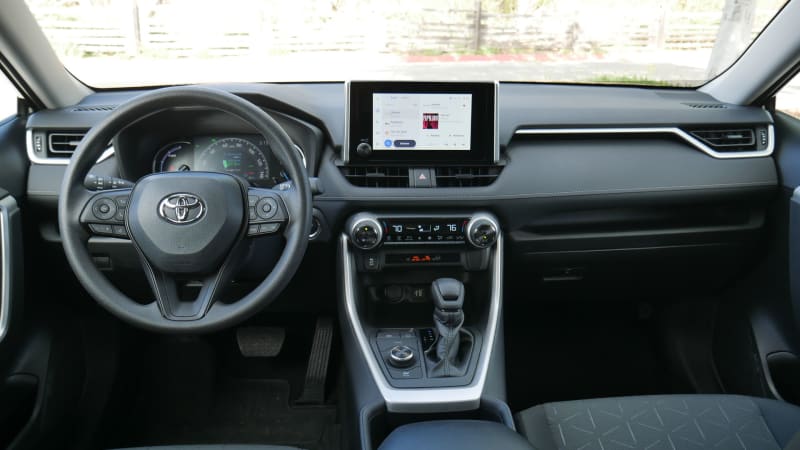
Which has better infotainment technology?
Again, Honda for the win. Toyota gave the RAV4 its latest infotainment system for 2023, and although it looks better and reacts quicker than before, we don’t like that there are no longer physical menu buttons and there’s too much locked away behind various touchscreen controls (some of which, like sound system levels get locked out while driving). The CR-V also got updated technology for 2023, and although hardly class-leading, it’s user friendly and feature-packed enough.
Which has a bigger back seat?
On paper at least, the CR-V has a bigger back seat: 41 inches versus 37.8 inches. Ultimately, though, we’re talking about degrees of “really big and practical” here. Full-sized adults and rear-facing child seats will have no problem fitting in either, and if you’re seeking family-friendly transportation, it’s hard to imagine being disappointed by the RAV4’s passenger space. It’s just that you’ll probably find a bit more in the CR-V.
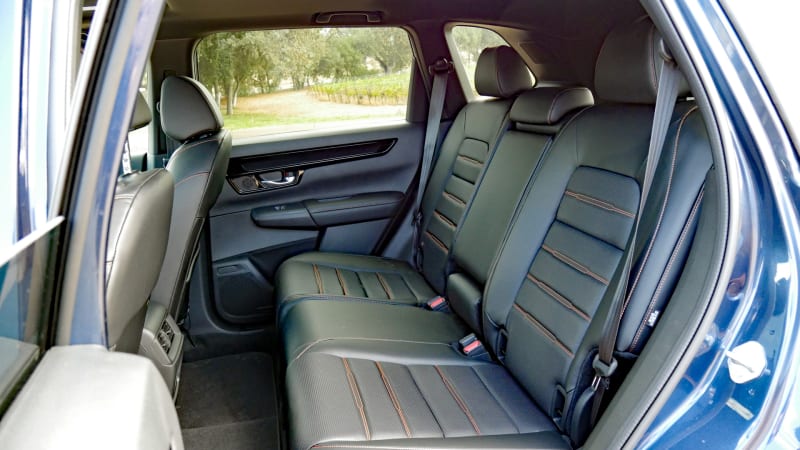
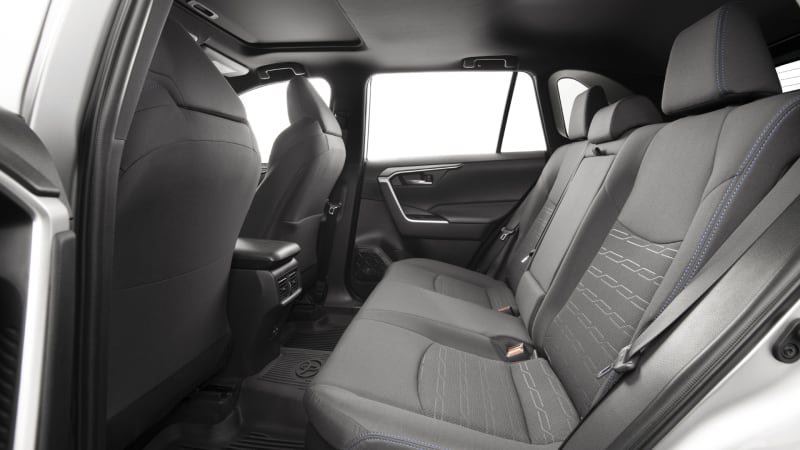
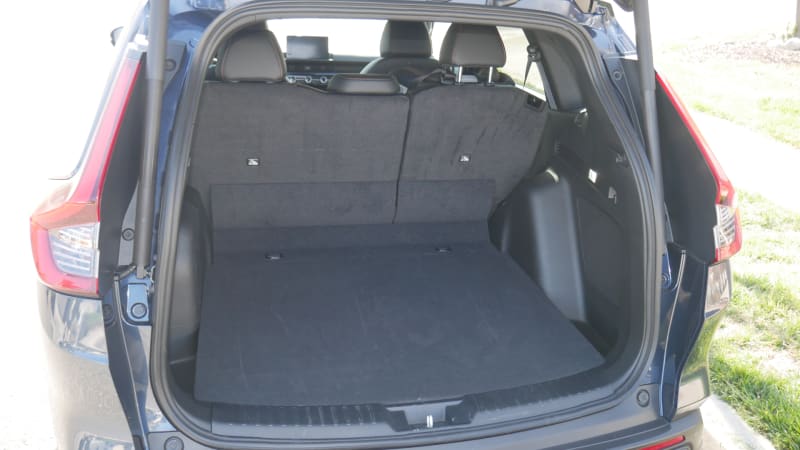
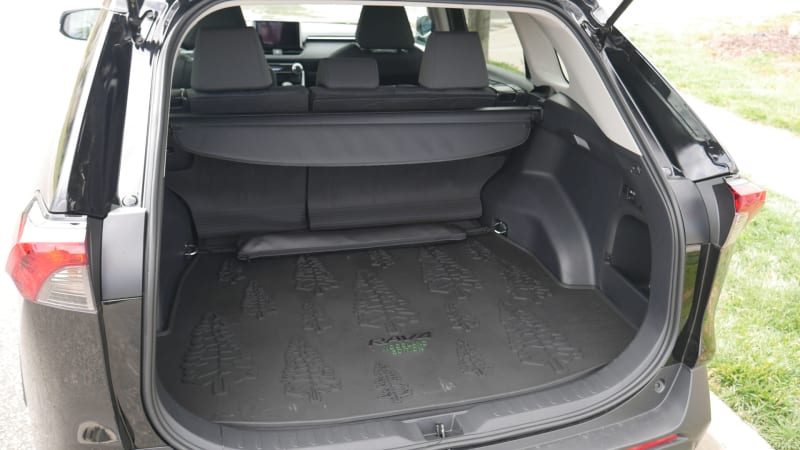
(CR-V is the one with leather upholstery and no rubber cargo mat)
Which has more cargo capacity and functionality?
On paper, the RAV4 has more cargo space with 37.5 cubic-feet to the CR-V’s 36.3. We backed this up in real-world testing, too, as the Toyota can in fact hold just a bit more behind its raised back seat. It has greater advantages than that, though. Its cargo cover can be stored under the floor, which itself can lower by about 2 inches for increased space/versatility. The RAV4 Hybrid also has a spare tire, while the CR-V Hybrid does not. Finally, certain RAV4 models like the Adventure, Woodland and TRD Off-Road have more functional roof rails than the CR-V’s.
Which is safer?
The CR-V received a Top Safety Pick+ award from the Insurance Institute for Highway Safety for its best-possible performance in all categories, except for one new category: it got two out of three points for front crash prevention at night. The RAV4 hasn’t even been subjected to that test yet, and it received “Average” scores in two of the IIHS updated tests where the CR-V aced. We wouldn’t put too much weight in that, though, as the RAV4 is still a Top Safety Pick … it just doesn’t get the +.
Both come standard with forward collision warning, automatic emergency braking, lane-keep assist, and adaptive cruise control, while blind-spot and rear-cross traffic are standard on all but the base RAV4 LE (a trim that had no equal in the CR-V lineup at the time of this writing).
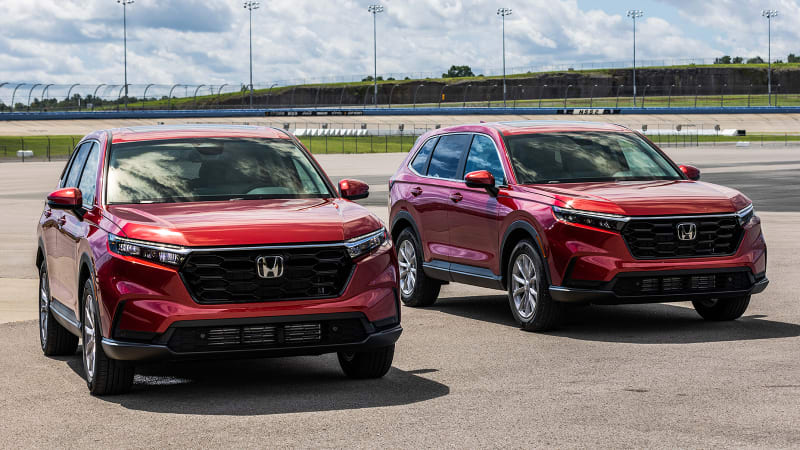

Which gets better fuel economy?
When it comes to the gas-only engines, the CR-V and RAV4 are tied at 30 mpg combined with front-wheel drive and 29 mpg combined with all-wheel drive (off-road-oriented RAV4s are bit lower).
As for the hybrids, the CR-V’s Sport trim is available with a front-wheel-drive version capable of 43 mpg combined. The RAV4 does not offer a FWD hybrid. Its all-wheel-drive version gets 40 mpg combined, though, which is superior to the AWD CR-V’s 37 mpg combined. Keep in mind that we’re talking about a minimal difference in terms of actual money spent, here.
There is also the RAV4 Prime, a plug-in hybrid that Honda has no answer for.
Which is more powerful?
This is a tricky one. The CR-V’s standard 1.5-liter turbocharged inline-four produces 190 horsepower and 179 pound-feet of torque. It has a continuously variable transmission. The RAV4 has a 2.5-liter naturally aspirated inline-four good for 203 hp and 184 lb-ft. It has a traditional eight-speed automatic. This means that the CR-V has less power and torque, but it’s turbocharged, so it actually feels quicker and is also a smoother, more refined engine. The Honda’s CVT is prone to droning under heavy acceleration, unlike the RAV4’s eight-speed.
It’s worth mentioning that we recommend the hybrids of both over their gas-only versions. Once again, the RAV4 Hybrid has more power with 219 horses versus the CR-V’s 204. However, we find the CR-V’s hybrid powertrain to be superior and the acceleration difference negligible. The Honda system relies more on its electric motor for acceleration and the engine doesn’t make as much noise when it kicks in.
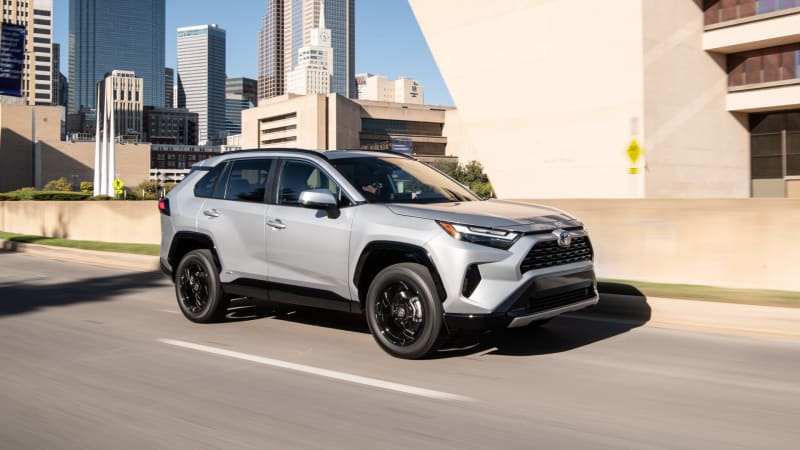
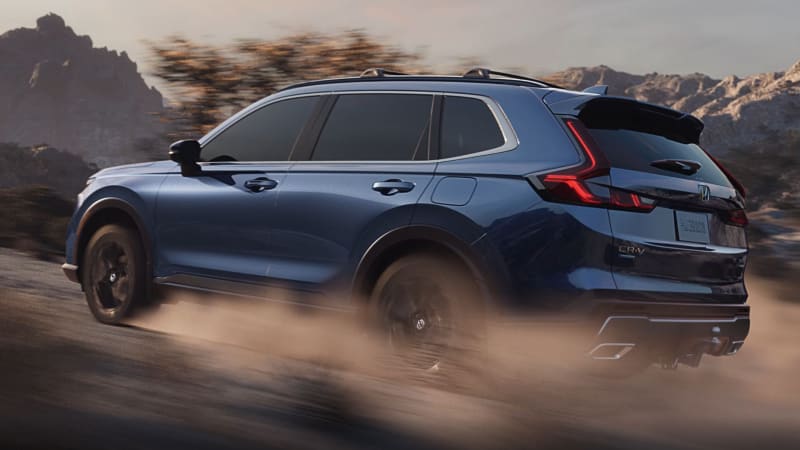
Which is better to drive?
The CR-V largely gets the nod here because its engines are more refined. We also prefer its steering, and in general, the CR-V feels more like a car to drive.
Which is more comfortable?
We’ve found that the CR-V has more comfortable seats with a greater range of motion, but this is one where individual preference is of greater importance. Ride comfort definitely depends on the trim level, because the RAV4’s off-road-oriented models will have firmer rides and extra noise because of their all-terrain tires. In general, it’s probably a wash.


Are there versions that stand out more than others?
The RAV4 offers three off-road-oriented models: the gas-only TRD Off-Road, Adventure and the hybrid Woodland Edition. The latter two are pictured above. The CR-V doesn’t offer anything like them.
When was the last time they were redesigned?
The current-generation RAV4 dates back to the 2019 model year, and received a mild update for 2022. The CR-V was completely redesigned for 2023.
Which is cheaper and offers more equipment?
To get the most up-to-date pricing, local inventory and equipment information for each car’s trim levels visit here for the Honda CR-V and here for the RAV4 and here for the RAV4 Hybrid.
